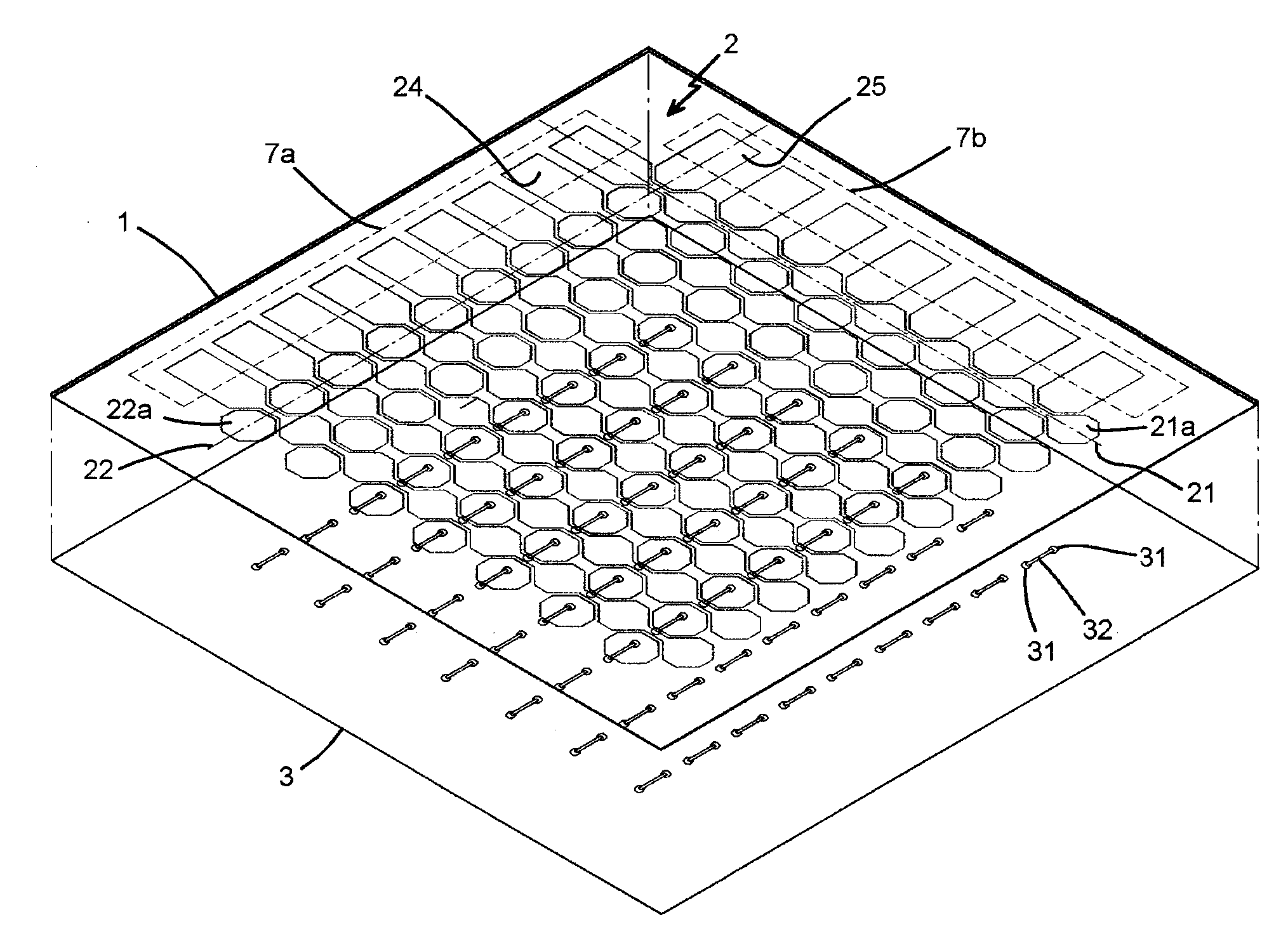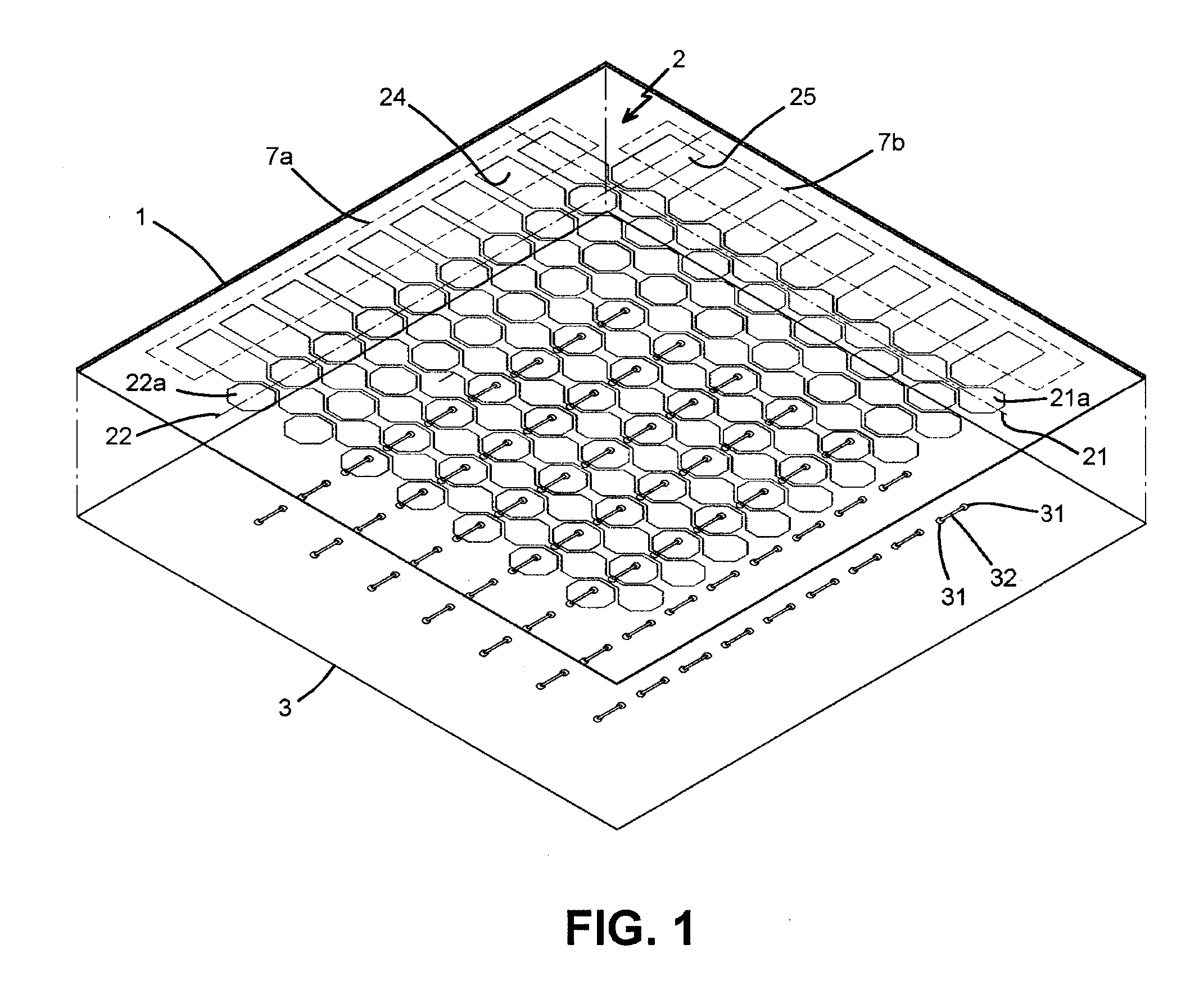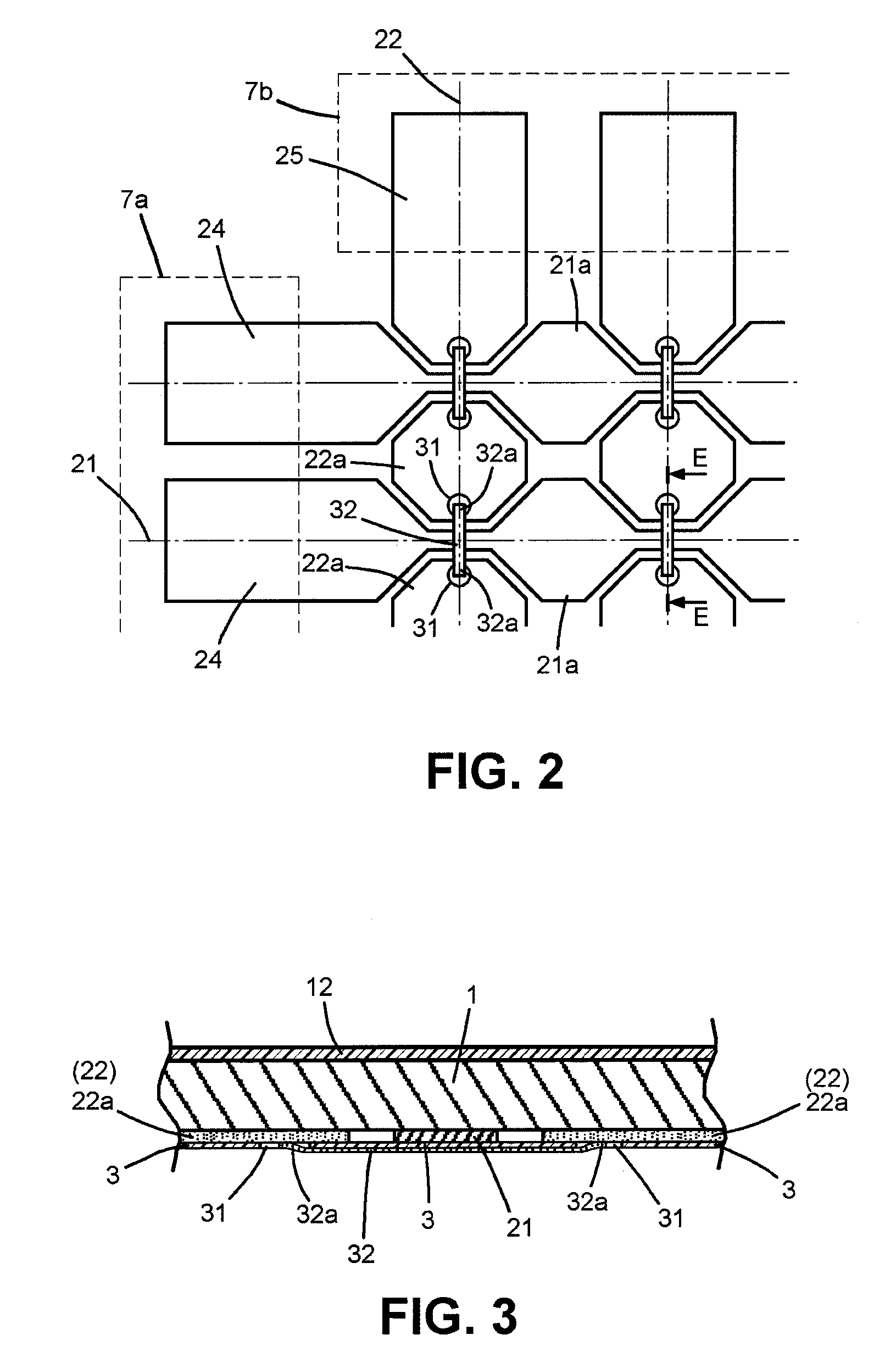Cover lens with touch sensing function
a technology of touch sensing and cover lens, which is applied in the field of cover lens, can solve the problems of damage to plate permittivity, and easy failure of touch panel during manufacturing process, so as to facilitate installation, and reduce the thickness of the assembled pla
- Summary
- Abstract
- Description
- Claims
- Application Information
AI Technical Summary
Benefits of technology
Problems solved by technology
Method used
Image
Examples
Embodiment Construction
[0010]In order that those skilled in the art can further understand the present invention, a description will be provided in the following in details. However, these descriptions and the appended drawings are only used to cause those skilled in the art to understand the objects, features, and characteristics of the present invention, but not to be used to confine the scope and spirit of the present invention defined in the appended claims.
[0011]Referring to FIGS. 1 to 3, a preferable embodiment of the present invention is illustrated. The present invention mainly includes a substrate, a surface layer, a sensing layer, and an insulated layer.
[0012]The substrate 1 of the cover lens is made of a 0.5 mm polymethylmethacrylate (PMMA) thin plate with permittivity of 95%. A surface layer 12 arranged on an upper surface of the substrate 1 is a hard coat layer with thickness of less than 0.1 mm.
[0013]The sensing layer 2 is made of a clear conductive film of Indium Tin Oxide. The sensing laye...
PUM
 Login to View More
Login to View More Abstract
Description
Claims
Application Information
 Login to View More
Login to View More - R&D
- Intellectual Property
- Life Sciences
- Materials
- Tech Scout
- Unparalleled Data Quality
- Higher Quality Content
- 60% Fewer Hallucinations
Browse by: Latest US Patents, China's latest patents, Technical Efficacy Thesaurus, Application Domain, Technology Topic, Popular Technical Reports.
© 2025 PatSnap. All rights reserved.Legal|Privacy policy|Modern Slavery Act Transparency Statement|Sitemap|About US| Contact US: help@patsnap.com



